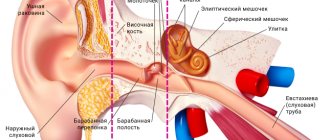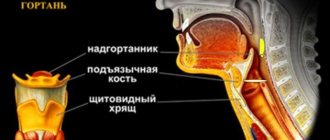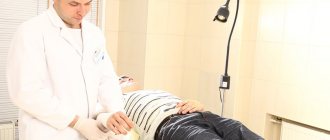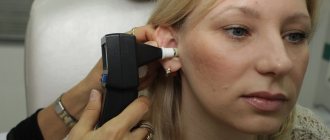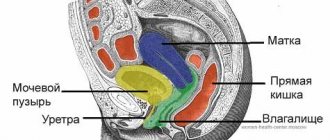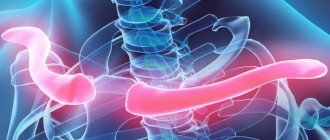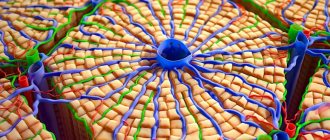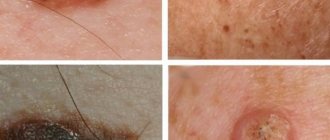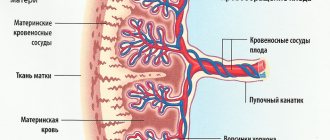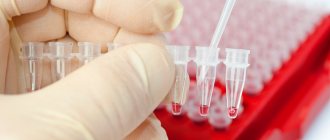External integument of vertebrates
All animals, both protozoa and multicellular, have body coverings that protect the body from the penetration of foreign bodies and substances, other organisms, excess moisture, as well as from mechanical damage.
The protective function of the integument is manifested in regulating body temperature and protecting it from water loss. In multicellular animals, the integument of the body is involved in metabolism. Single-celled organisms that have a constant body shape are covered on the outside with a durable shell. In multicellular organisms, the outer integument of the body becomes more complex and consists of a layer of elongated cells. Such coverings are called squamous epithelium. The integument of vertebrates has a complex structure. The skin consists of two layers - the epidermis and the skin itself. The epidermis is the outer multicellular layer. It produces horny scales, feathers, claws, hooves, hollow horns and numerous glands and pigment cells. Epidermal cells are constantly dividing, and the upper layers die and slough off. Leather itself is the most durable. Hair roots, skin horn formations, sebaceous and sweat glands develop in it. In mammals, subcutaneous fat is the deepest layer of the skin. It contains mainly fat cells, stored by the body in reserve. In addition, a layer of fat softens external shocks and retains heat. Thus, the evolution of body coverings followed the path of increasing the number of their layers and the appearance of new formations in them: cilia, glands, calcareous and chitinous covering, scales, claws, feathers, hair, horns, hooves, legs.
What is skin - an organ or not?
In biology, human skin is considered a multifunctional organ, one of the largest in the body. It ensures homeostasis of the body and protects it from various external influences. It is involved in thermoregulation, as well as in many metabolic processes, including respiration.
Normally, the weight of all layers of the skin (including the hypodermis) is about 16% of body weight, and the skin in the narrow sense is about 5%. Its area reaches 2.3 m² (for an adult). Skin cells are among the fastest dividing, they are completely renewed within a period of 3 weeks to 1 month. For comparison: blood, with a comparable total weight, is completely renewed in 4 months.
Human outer coverings
Skin is the outer covering of the human body. Its area is 1.5-1.6 m2. It consists of three layers: the outer - epidermis, the middle - dermis and the inner - subcutaneous fatty tissue (hypodermis). The skin performs a protective function: it protects the body from many harmful influences (mechanical, chemical, physical), and also creates an obstacle to most microbes. It produces special substances that promote its self-disinfection.
The skin is rich in muscle and elastic fibers that have the ability to stretch, giving it elasticity and resist pressure. Thanks to these fibers, the skin can return to its original position after stretching. The extensibility of the skin in different directions is not the same. Upon careful examination, you will notice that the entire surface of the skin is dotted with a large number of tiny folds, grooves and lines, forming a complex pattern of triangular and rhombic fields. In addition, there are subtle indentations on the skin. These are the so-called pores. The skin pattern of lines, grooves and pores in young people is less noticeable. With age it becomes more distinct. The skin grooves on the palms and soles stand out especially sharply, forming a complex individual pattern in their areas.
Subcutaneous fat
Subcutaneous fat, or hypodermis, is the lowest layer of skin, located under the dermis. It consists of fat lobules separated from each other by connective tissue septa containing collagen and penetrated by large vessels. The main cells of fat lobules are adipocytes, the number of which varies in different areas of the body. Currently, PFA is considered not only as an energy depot, but also as an endocrine organ, the adipocytes of which are involved in the production of a number of hormones (leptin, adiponectin, resistin), cytokines and mediators that affect metabolism, insulin sensitivity, reproductive and immune functional activity. systems
Structure and functions of the skin
Epidermis - the outer layer is formed by flat epithelium and has a thickness of 0.07 to 2.5 mm and depends on the nature and strength of environmental influences. The epidermis is thickest on the palms and soles, thinnest on the eyelids. The surface layer of the epidermis consists of keratinized dead cells (it also forms hair and nails), which look like scales and fit tightly to each other.
The epidermis is based on one row of prismatic cells that constantly divide and form new cells; these cells move to the outer layers, changing their shape, becoming flat, keratinizing, dying and exfoliating. The epidermis contains pigment cells (melanin) that give the skin its specific color. Pigmentation helps absorb short-wave rays and thereby protects internal organs from damage.
Skin color depends on several factors. The pigment melanin gives the skin a brown tint, the stratum corneum of the epidermis is gray-yellow, and the granular layer is whitish. The pink or reddish color of the skin is due to the fact that blood vessels are visible through the stratum corneum. Tissue fluids, refracting light rays, give the skin a matte white hue. The combination of all these shades forms the normal skin color, which changes with age and with certain diseases. There is no pigment in the skin of newborns. Even among blacks, the skin of a newborn child is light, reddish and receives its color only some time after birth. Pigmentation of human skin develops during the first months and years of life and depends not only on the number of pigment cells, but on their functional ability, i.e. on the degree of pigment formation in them. In people with fair skin at a young age, the pigment is distributed evenly. The blood supply to the skin at this age is well developed. The skin is rich in tissue fluid, giving it a whitish-matte tint.
In older people, the stratum corneum and granulosa of the epidermis thicken, and blood circulation worsens. White-yellow or gray-yellow color begins to predominate over the predominantly pink color. In addition, the tissues in aging skin become dehydrated and begin to transmit light rays deeper, which determines the yellowish color of the skin. Under the influence of endocrine factors, the nervous system and external phenomena (sunlight, air temperature, wind, mechanical stimuli), the amount of melanin pigment also increases, giving the skin a yellowish-brown tint. Moreover, the distribution of pigment in the skin becomes disrupted with age: age spots appear. Thus, as a result of all these changes, aging skin acquires a pale yellow or gray-earth color, often with pigment spots of various sizes in certain areas of the face, neck, and hands.
The dermis, or inner layer (the skin itself), is much thicker than the epidermis. It consists of dense connective tissue formed by cells and closely intertwined fibers. The fibers give the skin elasticity: it stretches and moves easily.
This layer of skin is abundantly supplied with blood vessels and nerve endings. There are numerous formations here: hair follicles, sebaceous and sweat glands, receptors. The hair follicles are connected to blood vessels, nerves and muscles. Contraction of these muscles occurs reflexively when cooling and straightens the hair, which helps improve the thermal insulation properties of the skin. In this case, a person develops “goose bumps”. Very sparse and short hair covers almost the entire human skin (except for the palms and feet). They have lost their protective significance and are vestigial. Together with nails, hair belongs to the horny formations of the skin.
The sebaceous glands, located at the roots of the hair, secrete oil that lubricates the hair and skin and protects it from drying out. Sweat glands produce and secrete sweat, which is similar in composition to urine, but less concentrated. They have a tubular structure and are a tube twisted into a ball, braided with blood capillaries.
Hypodermis - subcutaneous fatty tissue - is the deepest layer of the skin, consisting of loose connective tissue, which contains fibers and many fat cells. Fat reserves are stored here. In addition, subcutaneous tissue serves to protect the organs covered by it from shock and cooling.
Dermis
The dermis is a complex, loose connective tissue consisting of individual fibers, cells, a network of blood vessels and nerve endings, as well as epidermal outgrowths surrounding the hair follicles and sebaceous glands. The cellular elements of the dermis are represented by fibroblasts, macrophages and mast cells. Lymphocytes, leukocytes, and other cells are capable of migrating into the dermis in response to various stimuli.
The dermis, making up the main volume of the skin, performs primarily trophic and supporting functions, providing the skin with such mechanical properties as plasticity, elasticity and strength, which it needs to protect the internal organs of the body from mechanical damage. The dermis also retains water, participates in thermoregulation and contains mechanoreceptors. Finally, its interaction with the epidermis supports the normal functioning of these layers of skin.
In the dermis there is no such directed and structured process of cell differentiation as in the epidermis, however, it also exhibits a clear structural organization of elements depending on the depth of their occurrence. Both the cells and the extracellular matrix of the dermis also undergo constant renewal and remodeling.
The extracellular matrix (ECM) of the dermis, or intercellular substance, which consists of various proteins (mainly collagen, elastin), glycosaminoglycans, the most famous of which is hyaluronic acid, and proteoglycans (fibronectin, laminin, decorin, versican, fibrillin). All these substances are secreted by dermal fibroblasts. The ECM is not a random accumulation of all components, but a complexly organized network, the composition and architectonics of which determine such biomechanical properties of the skin as rigidity, extensibility and elasticity. Epidermal keratinocytes, which are closely connected to each other, are attached to the ECM proteins. They form a dense protective layer of the skin. The structure of the ECM is also capable of exerting a regulatory effect on the cells immersed in it. Regulation can be either direct or indirect. In the first case, ECM proteins and glycosaminoglycans directly interact with cell receptors and initiate specific signal transduction pathways in them. Indirect regulation is carried out through the action of cytokines and growth factors retained in the cells of the ECM network and released at a certain moment to interact with cell receptors. The ECM structural network is subject to remodeling by enzymes from the matrix metalloproteinase (MMP) family. In particular, MMP-1 and MMP-13 initiate the degradation of collagen types I and III. The density of the ECM network of the dermis is uneven - in the papillary layer it is looser, in the reticular layer it is much denser, both due to the closer arrangement of the fibers of structural proteins and due to the increase in the diameter of these fibers.
Collagen is one of the main components of the ECM of the dermis. Synthesized by fibroblasts. The process of its biosynthesis is complex and multi-stage, as a result of which the fibroblast secretes procollagen into the extracellular space, consisting of three polypeptide α-chains folded into one triple helix. Procollagen monomers are then enzymatically assembled into extended fibrillar structures of various types. In total, there are at least 15 types of collagen in the skin; in the dermis, types I, III and V of this protein are most abundant: 88, 10 and 2%, respectively. Type IV collagen is localized in the basement membrane zone, and type VII collagen, secreted by keratinocytes, plays the role of an adapter protein for attaching ECM fibrils to the basement membrane (Fig. 4). Fibers of structural collagens of types I, III and V serve as a framework to which other ECM proteins are attached, in particular collagens of types XII and XIV. It is believed that these minor collagens, as well as small proteoglycans (decorin, fibromodulin and lumican), regulate the formation of structural collagen fibers, their diameter and the density of the formed network. The interaction of oligomeric and polymeric collagen complexes with other proteins, ECM polysaccharides, various growth factors and cytokines leads to the formation of a special network with certain biological activity, stability and biophysical characteristics important for the normal functioning of the skin. In the papillary layer of the dermis, collagen fibers are located loosely and more freely, while its reticular layer contains larger strands of collagen fibers.
Rice. 4. Schematic representation of skin layers and distribution of different types of collagens.
Collagen is constantly renewed, degrading under the action of proteolytic enzymes collagenases and being replaced by newly synthesized fibers. This protein makes up 70% of the skin's dry weight. It is the collagen fibers that “withstand the blow” under mechanical influence on it.
Elastin forms another network of fibers in the dermis, giving the skin such qualities as firmness and elasticity. Compared to collagen, elastin fibers are less rigid and curl around collagen fibers. It is with elastin fibers that proteins such as fibulins and fibrillins bind, to which, in turn, latent TGF-β-binding protein (LTBP) binds. Dissociation of this complex results in the release and activation of TGF-β, the most potent of all growth factors. It controls the expression, deposition and distribution of collagens and other matrix proteins in the skin. Thus, the intact network of elastin fibers serves as a depot for TGF-β.
Hyaluronic acid (HA) is a linear polysaccharide consisting of repeating dimers of D-glucuronic acid and N-acetylglucosamine. The number of dimers in the polymer varies, which leads to the formation of HA molecules of different molecular weights and lengths - 1x105-107 Da (2-25 μm), which, accordingly, have different biological effects.
HA is a highly hydrophilic substance that affects the movement and distribution of water in the dermal matrix. Thanks to this property, our skin, normally and in youth, has high turgor and resistance to mechanical pressure.
HA easily forms secondary hydrogen bonds both within one molecule and between neighboring molecules. In the first case, they ensure the formation of relatively rigid spiral structures. In the second, association with other HA molecules and nonspecific interaction with cell membranes occurs, which leads to the formation of a network of polysaccharide polymers with fibroblasts included in it. Shorter molecules of proteoglycans (versican, lumican, decorin, etc.) “sit” on a long HA molecule, like on a thread, forming aggregates of enormous sizes. Extended in all directions, they create a scaffold, contributing to the stabilization of the ECM protein network and fixing fibroblasts in a specific matrix environment. Taken together, all these properties of HA endow the matrix with certain chemical characteristics - viscosity, density of “cells” and stability. However, the ECM network is a dynamic structure that depends on the state of the organism. For example, under conditions of inflammation, HA aggregates with proteoglycans dissociate, and the formation of new aggregates between newly synthesized HA molecules (renewed every 3 days) and proteoglycans is blocked. This leads to a change in the spatial structure of the matrix: the size of its cells increases, the distribution of all fibers changes, the structure becomes looser, the cells change their shape and functional activity. All this affects the condition of the skin, leading to a decrease in its tone.
In addition to regulating water balance and stabilizing the ECM, HA plays an important regulatory role in maintaining epidermal and dermal homeostasis. HA actively regulates dynamic processes in the epidermis, including keratinocyte proliferation and differentiation, oxidative stress and inflammatory response, maintenance of the epidermal barrier and wound healing. In the dermis, HA also regulates fibroblast activity and collagen synthesis. By remodeling the matrix, HA controls the functioning of cells in the matrix, influencing their availability to various growth factors and changing their functional activity. Cell migration and the immune response in tissue depend on the action of GC. Thus, changes in the distribution, organization, molecular weight and metabolism of GCs have significant physiological consequences.
Fibroblasts are the main type of cellular elements of the dermis. It is these cells that are responsible for the production of HA, collagen, elastin, fibronectin and many other intercellular matrix proteins necessary for the formation of connective tissue. Fibroblasts in different layers of the dermis differ both morphologically and functionally. Not only the amount of collagen they synthesize depends on the depth of their location in the dermis, but also the ratio of the types of this collagen, for example types I and III, as well as the synthesis of collagenase: fibroblasts in the deeper layers of the dermis produce less of it. In general, fibroblasts are very plastic cells, capable of changing their functions and physiological response and even differentiating into another cell type depending on the stimulus received. The role of the latter can be played by signaling molecules synthesized by neighboring cells and the restructuring of the surrounding ECM.
Protective function of the skin
| Skin function | |
| Receptor | Tactile: sensation of touch; Temperature: perception of cold and hot; Protective:
|
| excretory | During the day, 0.5 liters of water, salt, and lactic acid are released through the skin |
| Thermoregulatory | More than 80% of heat is lost through the surface of the skin |
| Participation in blood circulation | At the same time, the skin contains up to 1 liter of blood |
| Participates in mineral metabolism | Produces vitamin D and melanin |
The skin is equipped with a large number of different sensory nerves and corresponding nerve endings (receptors), due to which it functions as a complex sensory organ. Skin receptors perceive various irritations from the external environment and signal them to the cerebral cortex. That is why we are able to feel touch and feel objects, feel heat and cold, experience pressure and pain. Skin receptors make it possible to obtain ideas about the objects around us, their size, shape, the nature of their surface, temperature.
Functions and properties
The functions of the skin are as follows:
- respiratory - it is capable of absorbing oxygen from the air and releasing carbon dioxide, providing up to 7% of human oxygen needs;
- protective - protection from mechanical, chemical, radiation influences, penetration of dangerous microorganisms and excess water;
- thermoregulatory - due to the release of sweat and direct radiation of heat (emission of infrared rays);
- water-salt metabolism;
- excretory - metabolic products are excreted through sweat;
- blood depot - up to 20% of the total blood volume of the body can simultaneously reside in the vessels of the dermis;
- metabolic and endocrine - synthesis and accumulation of certain hormones and vitamin D;
- receptor - the entire surface of the body is an organ of touch;
- immune - participation in the functioning of the immune system and the development of an immune response.
Thus, it is impossible to unequivocally answer the question of what function the skin performs: it has many functions. The main ones are protective and receptor.
Skin thermoregulation
The skin takes part in heat regulation. It protects the body from overheating and cooling, helps maintain a constant body temperature. About 80% of the heat generated in the body is released through the skin. The skin is the main organ of thermoregulation. Through the skin, the body releases heat to the environment through heat conduction, heat radiation, and a significant part through the evaporation of sweat. If, for example, you hold a wet hand in the air, a feeling of cold appears because the evaporation of water cools the hand.
Heat transfer through the evaporation of sweat occurs in different ways: with the evaporation of sweat, the formation of which depends on the amount of blood passing through the skin vessels; as a result of radiation of heat into the surrounding air; due to the transfer of heat to objects in direct contact with the body, such as clothing; due to the mixing of air currents, in which the warm air surrounding the surface of the body is replaced by cooler air.
Heat transfer through the evaporation of sweat occurs continuously in the form of perspiration, imperceptible to us. During the day, the skin secretes twice as much water through sweat as the lungs do during the same time. In hot weather, the body loses more heat because the blood vessels dilate, the blood flow in them accelerates, and the amount of blood flowing near the surface of our body increases, where it cools. In cold weather, the skin vessels narrow, the skin turns pale, and sweat production decreases sharply, resulting in reduced heat transfer.
Human skin renewal period
The skin is constantly renewed throughout life: dead cells are exfoliated from its surface and everything that accumulates on it is removed - excretory products and what settles from the external environment.
This process is more active the younger the person. Old cells move away because new ones take their place from the depths. New cells begin to appear less and less over time - hence the dependence on age.
The epidermis and middle layer of skin are separated by a basement membrane with a layer of constantly dividing cells. The next row of cells, having arisen, gradually moves from it to the surface. There it peels and exfoliates. When renewed, the epidermis is completely restored: moles, scars, freckles and papillary patterns are reproduced with the highest accuracy.
The entire cycle from the birth of cells to their loss in a young person is 21-28 days. But already from the age of 25, a gradual slowdown of the process begins. By the age of 40, the rate of renewal drops to 34-46 days, and after 50 years it is already 55-75 days. Visible “aging” of the skin is due to this circumstance.
Skin appendages - nails and hair
All human fingers have nails on the back side of the terminal phalanges - thin and transparent keratinized plates. These are adnexal formations of the skin that develop from the epidermis. The nails are curved according to the surface of the nail phalanx of the finger. Most of the nail - its body - ends with a free edge and goes into the thinnest part of the nail - the root, which protrudes deep into the fold of skin. At the point where the body of the nail transitions into the root, under the skin ridge, a semi-lunar-shaped lighter part of the nail protrudes - the place of its growth. The entire nail is located in the nail bed. It is a skin formation and is tightly connected to the tuberosity of the nail phalanx using bundles of connective tissue fibers. There are no glands in the nail bed area, but there are a large number of sensory nerve endings.
The structure of the nail is similar to the structure of the epidermis. It distinguishes between the germinal and horny layers. The first corresponds to the germ layer, the proliferation of cells of which determines the growth of the nail. In a living person, the nail grows continuously and quite quickly - up to 4 mm per month, especially on the fingers. The substance of most of the nail consists of the stratum corneum. The nail plate is devoid of blood vessels and nerves. The pink color of the nail depends on the subungual vessels, which are visible through the transparent stratum corneum. When stagnation occurs due to changes in the color of the blood, the color of the nails also changes (cyanosis).
Skin appendages also include filamentous formations - hairs that cover a significant part of the surface of the skin. Only in some places are they completely absent (palms and palmar surfaces of the fingers, soles and plantar surfaces of the toes, dorsal surfaces of the terminal phalanges of all fingers). All hair is divided into several types according to its appearance. Long hair includes the hair of the head, beard and mustache. Short, bristly hair includes hair from the eyebrows, eyelashes, as well as hair located near the opening of the nose and the external auditory canal. There are also thin, woolly hairs (fluff) that are found on the body, limbs and face.
Hair is located obliquely to the surface of the skin. The root begins as a thickening, a hair follicle. The free part of each hair that protrudes above the skin is called its shaft. Each hair has a special straightening muscle attached to it. The hair has different colors - from pale yellow to black. Their color depends on the presence of pigment in the cortical layer, the intensity of the color depends on the amount of the latter. With the loss of pigment, graying of the hair occurs, which is intensified by the penetration of air between the cells of the cortex. Hair in a living person grows continuously. Hair serves as a protective device: eyelashes, eyebrows protect the eyes. These bristly hairs not only mechanically trap large dust particles, but also act as sensitive “antennas.” Even a light touch to them causes irritation of the sensitive nerve endings that are densely entwined at the hair root.
